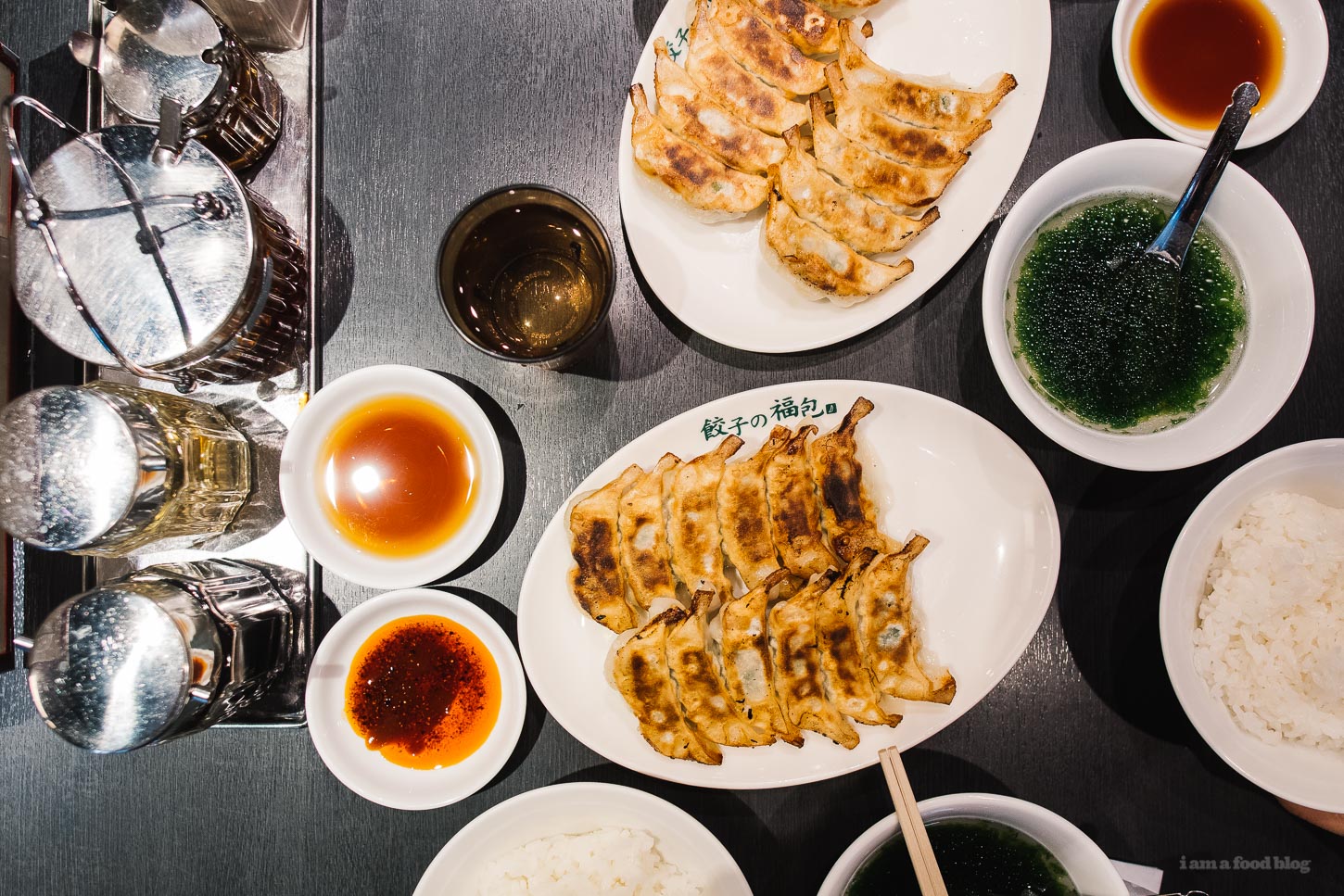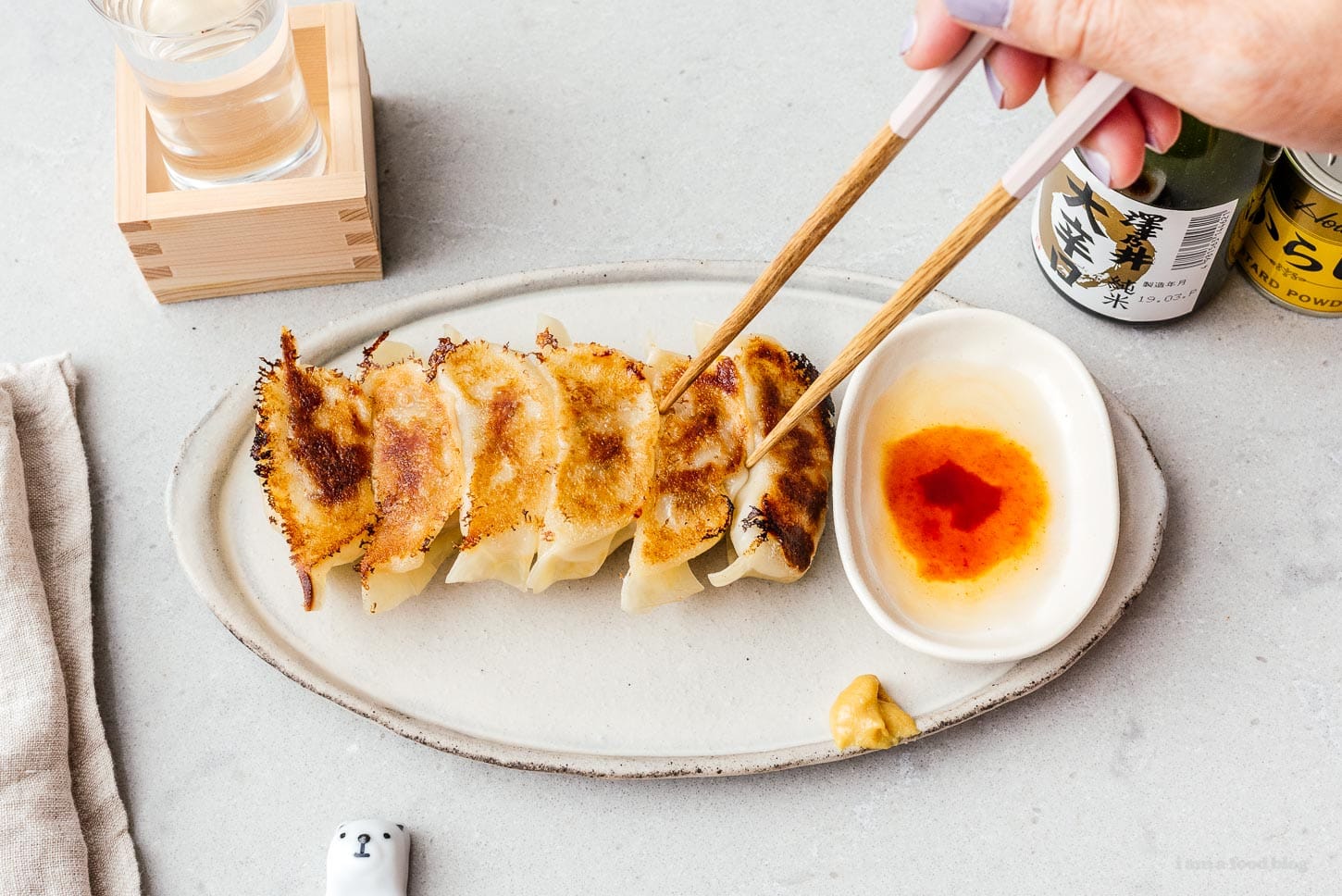
Is there anything more perfect than gyoza? A tender, flavorful, juicy meatball wrapped in a noodle-y coat is the best bite in the whole world.
I love gyoza. They are one of my go to comfort foods and every time we land in Tokyo, our first meal inevitably is at Gyoza no Fukuho, a chain known for their yaki gyoza (fried gyoza). The gyoza are crisp but not overly oily, extremely flavorful and garlicky. They make me feel like everything is right with the world.
Gyoza is one of those foods that can be both high and low end. You can find Michelin starred chef takes on gyoza and you can also find it at convenience stores in little plastic trays. They appeal to everyone: crispy bottoms, tender tops, and juicy insides. Mike and I love gyoza so much that one year we went on a dedicated gyoza hunt in Tokyo. I miss my Tokyo gyoza eating days.

What are gyoza?
Gyoza are Japanese dumplings. They’re based off of Chinese potstickers or jiaozi, adapted and fully incorporated into Japanese cuisine. Gyoza are ground meat filling wrapped up in a piece of thinly rolled out dough. They can be deep-fried, boiled, steamed, and pan-fried. Gyoza are super popular and versatile, you can eat them for breakfast, lunch, dinner, a late night snack, you name it, and gyoza will be there for you. They are the perfect bite. Gyoza are usually served with soy sauce, vinegar, and Japanese chili oil or rayu
You can find gyoza at most Japanese restaurants, especially izakaya or ramen shops. In Japan they have restaurants dedicated to only serving gyoza. They come frozen in bags at the grocery stores and there are gourmet shops that ship directly to your house so you can make restaurant specialty gyoza right in the comfort of your own home. Unfortunately they don’t ship world wide so the next best thing is making them at home from scratch. Spend some time making a batch or six, freeze the extras. The next time you’re hungry you can eat your bounty of resourcefulness.

Gyoza vs potstickers
Potsickers, or jiaozi or Chinese dumplings are essentially the same dish with some essential differences. Japanese gyoza tend to be a tiny bit smaller than potstickers and have thinner skins. They’re also seasoned differently, most notably heavier on the garlic.
How to make gyoza
- Mix. First off make the filling by mixing everything into a homogeneous paste. The classic filling is pork, cabbage, nira (Chinese chives) or scallions, ginger, garlic, soy sauce, sake, and toasted sesame oil.
- Wrap. Add a tablespoon of filling to the middle of a round gyoza wrapper, lightly moisten the edges and pleat and press together the edges.
- Fry. Heat up a bit of oil in a non stick frying pan, brown the bottoms, add a bit of water and cover the pan to steam. When all of the water evaporates, lift off the lid, let the bottoms crisp up a bit and you’re done.
- Eat. Enjoy hot and crispy with soy sauce, rice vinegar, and chili oil for dipping!